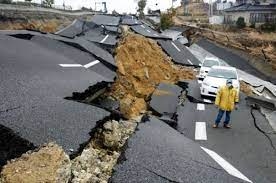California earthquakes leave us quaking
The Los Angeles area has been said to be long overdue for an earthquake. Since elementary school, students have been preparing emergency food and blanket packages in the case of the rumored “Big One”. With the numerous fault lines California residents are living near and on-top of, California is highly susceptible to earthquakes of incredibly large magnitudes. Two weeks ago, Claremont residents received a preview of the inevitable.
In accordance with the U.S. Geological Survey, a magnitude 3.6 earthquake was reported Saturday morning at 10:04 a.m., near the region of Eastvale, California. The earthquake took place less than a mile from Ontario, California, near Jurupa Valley, about two miles from Fontana, and three miles away from Rancho Cucamonga. Many Claremont residents were able to feel the effect of the earthquake. The earthquake transpired at a depth of seven miles.
Earthquakes are incredibly common in the regions of California and Nevada. Annually, the Southern California area roughly has 10,000 earthquakes. The majority of them are very small and can barely be felt. At most, several hundred are larger than a magnitude of 3, and only about 15-20 are greater than a magnitude of 4. In the past two days, two earthquakes of around 4.4 magnitudes trembled and shook areas around Santa Rosa.
“Actually if you look at the San Francisco Bay Area in general, the probability of a magnitude 6.7 quake or greater in the next 30 years is actually 72%,” Andy Michael, a geophysicist with the USGS said. “So it’s more likely than not.”
Furthermore, USGS claims that there is a 70% chance that multiple quakes of a magnitude 6.7 or larger will occur prior to the year 2030.
The “Big One” has always been used to refer to catastrophic earthquake scenarios occurring all across the state of California. Large earthquakes have always been predicted to occur all over the state because of their proximity to the San Andreas Fault and a multitude of other fault lines in the area. California has the second largest amount of earthquakes per year in the United States, right behind the state of Alaska. Portions of the San Andreas fault have remained inactive for hundreds of years, meaning that in accordance to geologists, California can potentially be seeing extensively destructive earthquakes in its future.

Hello there! Our goal is to provide relavent, engaging journalism for readers of all ages. Your donation will support the student journalists of the Wolfpacket at Claremont High School, and will allow us to purchase equipment, print our monthly issues, and enter in journalism competitions. We appreciate your consideration!

Areesh Zaidi is a junior at Claremont High School and a second-year reporter on the Wolfpacket. Zaidi has always loved journalism and reading. Outside...














